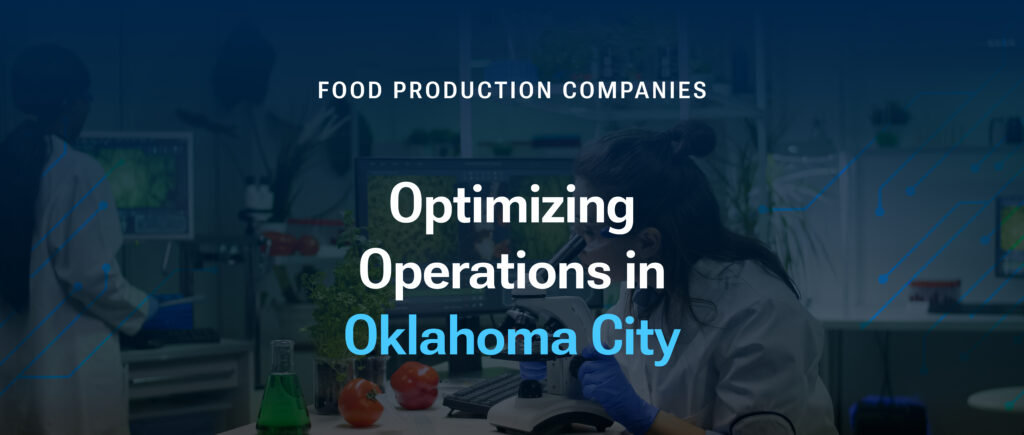Let’s be honest—running a food production company in Oklahoma City isn’t getting any easier. You’re juggling ever-changing FDA regulations, trying to keep production lines running smoothly, and protecting your family recipes and customer data. All while watching those profit margins get thinner every year.
After walking through dozens of food production facilities across Oklahoma City, I hear the same frustrations time and again:
“My IT people don’t understand food production.”
“We’re spending a fortune on technology that doesn’t actually solve our problems.”
That’s why I created this guide: to show Oklahoma food producers what effective, practical technology really looks like when it’s tailored to your industry, your facilities, and your goals.
What Makes Food Production Different (And Why Generic IT Doesn’t Work)
Dealing With Regulations Without Losing Your Mind
Regulatory compliance eats time and money, but the right IT systems can turn it into an advantage.
Here’s how smart producers streamline compliance:
- Digital documentation that follows ingredients from dock to delivery: When a health inspector asks about that shipment from three months ago, you can pull it up in seconds rather than digging through filing cabinets
- Automated monitoring that watches temperatures, humidity, and more: One local meat processor told me they avoided a potential $50,000 product loss when their system alerted them to a freezer issue at 2 AM
- Inspection-ready reports that practically write themselves: A bakery owner I work with cut their audit prep time from three days to four hours
The bonus? These systems also help improve product quality, making compliance less painful and more profitable.
Making Your Production Line Work As a Team
Your equipment needs to do more than just run, it needs to work together seamlessly. Here’s what that looks like when it’s done right:
- Real-time dashboards that show exactly what’s happening: Like having a control tower for your entire operation
- Early warnings when something’s about to break down: One pasta manufacturer I work with saved $120,000 last year by fixing issues before they caused line stoppages
- Production data that helps you make smarter decisions: A local bottling company discovered they could increase output by 14% just by adjusting their line sequence
These aren’t just fancy tech features, they’re practical tools that pay for themselves by keeping your operation running smoothly and efficiently.
Supply Chain Clarity When You Need It Most
Remember when that one supplier issue affected half your product line? With better systems in place, you can:
- Track everything from field to table: When customers or regulators ask questions, you have answers
- Keep suppliers accountable: No more wondering if that shipment will meet your standards
- Manage inventory like a pro: One Oklahoma City snack food producer cut waste by 22% while never running out of critical ingredients
- Handle recalls with surgical precision: If the worst happens, you can target only affected products instead of scrapping entire production runs
In today’s market, this kind of transparency isn’t just nice to have, it’s becoming the price of entry.
Technology That Makes Sense for Food Production
Equipment That Can Handle Your Environment
Let’s face it—food production facilities aren’t gentle on technology. You need:
- Hardware that can stand up to wash-downs and temperature swings: Standard office equipment falls apart quickly in production environments
- Backup systems that keep you running no matter what: Oklahoma weather alone is reason enough for solid continuity planning
- Networks that separate your critical production systems from office work: So an email virus can’t shut down your production line
- Tech that meets food safety requirements: Because no one wants keyboards becoming bacterial breeding grounds
One dairy processor I work with used to replace their production floor computers every 6-8 months. With proper industrial-grade equipment, they’re now getting 5+ years from each unit, while actually spending less overall.
Software That Speaks “Food Production”
Generic business software just doesn’t understand what you do. Industry-specific solutions deliver benefits like:
- Recipe management that protects your intellectual property: Your formulations are your competitive advantage—they deserve serious protection
- Quality systems that flag issues before products leave your facility: A local sauce manufacturer caught a labeling issue that could have triggered a recall, saving them an estimated $200,000
- Production tools that help you squeeze more from every run: Small efficiency improvements add up to serious money when you’re producing at scale
- Allergen controls that prevent costly cross-contamination: One bakery client implemented digital allergen tracking and eliminated a persistent issue that had plagued them for years
These specialized systems understand your language and your challenges, unlike generic software that forces you to adapt to it.
Protection Against Modern Threats
Food producers are now prime cyber targets. Attacks aren’t just about stolen emails—they can disrupt production lines and leak trade secrets.
Effective protection includes:
- Securing production equipment, not just computers: Because a compromised mixer or filler can cause real damage
- Safeguarding your proprietary recipes and processes: One local company nearly lost its signature product to industrial espionage
- Extending security to suppliers who access your systems: Your security is only as strong as your weakest link
- Having a specific plan for food production emergencies: Because your response needs to be different than what works for an accounting firm
This isn’t about fancy security tools—it’s about practical protection for the operation you’ve worked so hard to build.
Making Technology Changes Without Disrupting Production
Improving your technology shouldn’t mean shutting down your operation. Here’s how to do it right:
- Start with understanding exactly where you are: Let’s look at what’s working, what’s not, and where the pain points are
- Create a plan that aligns with your business goals: Technology should solve real problems, not create new ones
- Implement changes in stages: Small victories are better than big disruptions
- Connect everything together: Your production systems and business systems should talk to each other
- Keep improving as your needs change: Technology is never “done”
Most food production companies I work with in Oklahoma City find that having a partner who understands both food production and technology makes this process much smoother. You shouldn’t have to become a tech expert to get systems that work for your business.
The Bottom Line: What Good Technology Actually Delivers
When you align technology with food production realities, the results are clear:
- 20–30% less downtime in the first year
- 3–5% yield increase without changing your inputs
- Audit prep time cut in half or more
- 64% fewer holds and rejections within six months
For food producers in Oklahoma City’s competitive market, these improvements directly impact your bottom line and your ability to grow.
Let’s Talk About Your Specific Challenges
Every food production operation is unique—your combination of products, processes, and people creates challenges that need thoughtful solutions, not off-the-shelf answers.
At ANDGroup, we’ve spent years working specifically with Oklahoma City food producers. We understand the difference between a mixing issue and a networking issue, and we speak both languages fluently.
Let’s start with a conversation about your operation. We’ll walk your production floor, talk with your team, and understand what you’re trying to achieve. Then we can show you how the right technology approach can help you get there.
Because at the end of the day, technology should make running your food production business easier, not harder.

